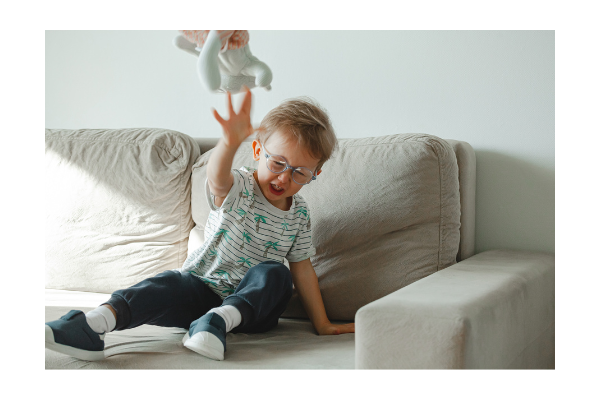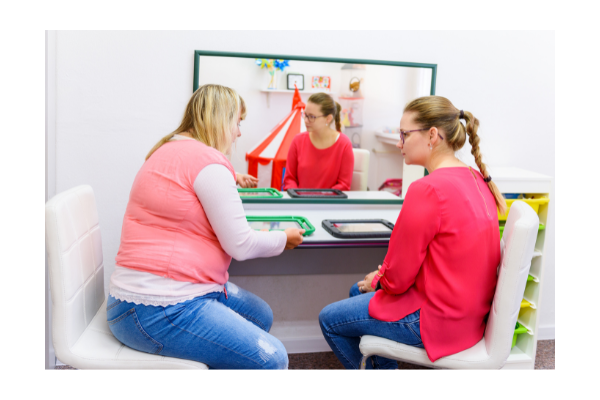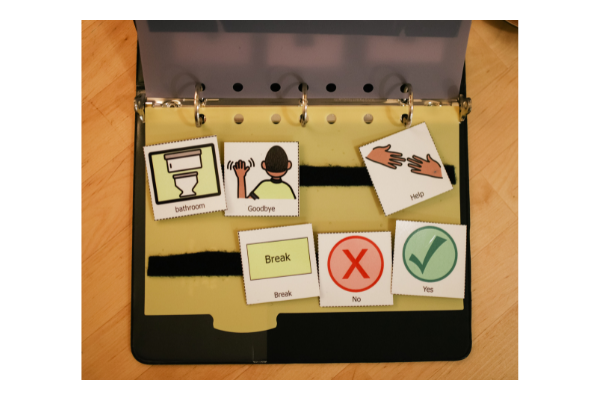Communication is a right for all.
As a School Psychologist, I work with educators and parents who have children with significant behavioral, cognitive, and communication needs. Research indicates that as many as 25-37% of people with significant cognitive disabilities do not use oral speech.

I am sharing communication strategies that are evidence based, and have been proven to support students with their communication needs. I HIGHLY recommend having a Speech and Language Pathologist (SLP), and possibly even an Augmentative and Adaptive Communication specialist as part of your child’s care team (big shout out to my SLP people!).
What are Evidence-Based Interventions?
When consulting with my fellow educators and parents, I often recommend evidence based interventions to use to help. Evidence based interventions are some strategies that have been proven to be successful more often than not.
Evidence-based interventions are approaches and techniques that have been thoroughly researched, tested, and proven to be effective in addressing specific challenges or promoting positive outcomes in children. These interventions are grounded in scientific evidence and are designed to provide you with the most reliable and successful tools to support your child’s growth.
Evidenced based interventions for communication
Functional communication training (FCT): FCT is an intervention strategy used to decrease the incidence of interfering behaviors and to those behaviors with clearer communicative forms. Children with significant behaviors (like hitting, kicking, biting, self injurious behaviors, etc.) are taught alternative ways to communicate that serve the same function as the interfering behavior.

Picture Exchange Communication System (PECS): PECS is a behaviorally based, alternative communication system based on the principles of Applied Behavior Analysis (ABA).. PECS teaches the child to become an initiator of communication by exchanging a picture symbol for a desired object, etc. Children use picture icons to indicate what they want to say.

Voice Output Communication Aids (VOCA): VOCAs are portable electronic devices that provide computer generated or digitized speech output. There are many different types of programs to help with voice output, and the Speech and Language Pathologist on your team can recommend programs that would be most effective for your child or student.

Communication Systems
There are many different types of communication systems that you can use to support your child. Typically, the Speech and language pathologist will recommend a combination of no tech, low tech, and high tech options.
No tech can sometimes be referred to as unaided communication. No-tech does not require access to equipment and, therefore, is always available. Commonly, gestures and facial expressions are considered a no tech option.
Low tech can sometimes be referred to as aided communication. Low-tech supports do not have an electronic component. These can be created by families and educational professionals or commercially prepared. Commonly, low tech options can include: writing, drawing, spelling words by pointing to letters, and pointing to photos, pictures, or written words.
High tech is commonly referred to as aided communication. High-tech AAC devices are portable, electronic systems that provide synthetic or recorded voice output.
In some systems, the user may use touch or eye gaze to select from symbols, letters, or words displayed on a screen. In other systems, the user can type text that is converted into spoken words.
How do I know which strategies are best for my child or student?
The SLP supporting your child will conduct an assessment to determine which strategies will work best for your child. This will include trying various strategies and programs with your child, gathering input from parents, child, and educators, and observing your child in their classroom environment.
The SLP will put together their report and recommendations. The Individualized Education Plan (IEP) team will gather and review the results, and as a team, you will decide what works best for your child.

Documentation in the IEP
A student’s communication needs, services, and communication needs to be clearly outlined AAC documented within their IEP. This ensures that your child will have access to what they need to communicate effectively throughout the day.
Consultation between Speech and Language Pathologists and other providers should be an included service on your child’s IEP. This collaboration can help providers in understanding and implementing the evidence based interventions correctly.
For more information
If you like to geek out on evidence based practices like I do, here are are some other FREE resources to check out about communication:
The IRIS Center– This website has great free resources on research based strateiges and interventions on many different topics affecting children’s communication, behavior, social emotional needs, and assessing children’s needs.
AFIRM modules– These are free resources to help educate parents, educators, and other school staff on evidence based interventions for children with Autism.
As always, I’m happy to help consult! Feel free to contact me 🙂






